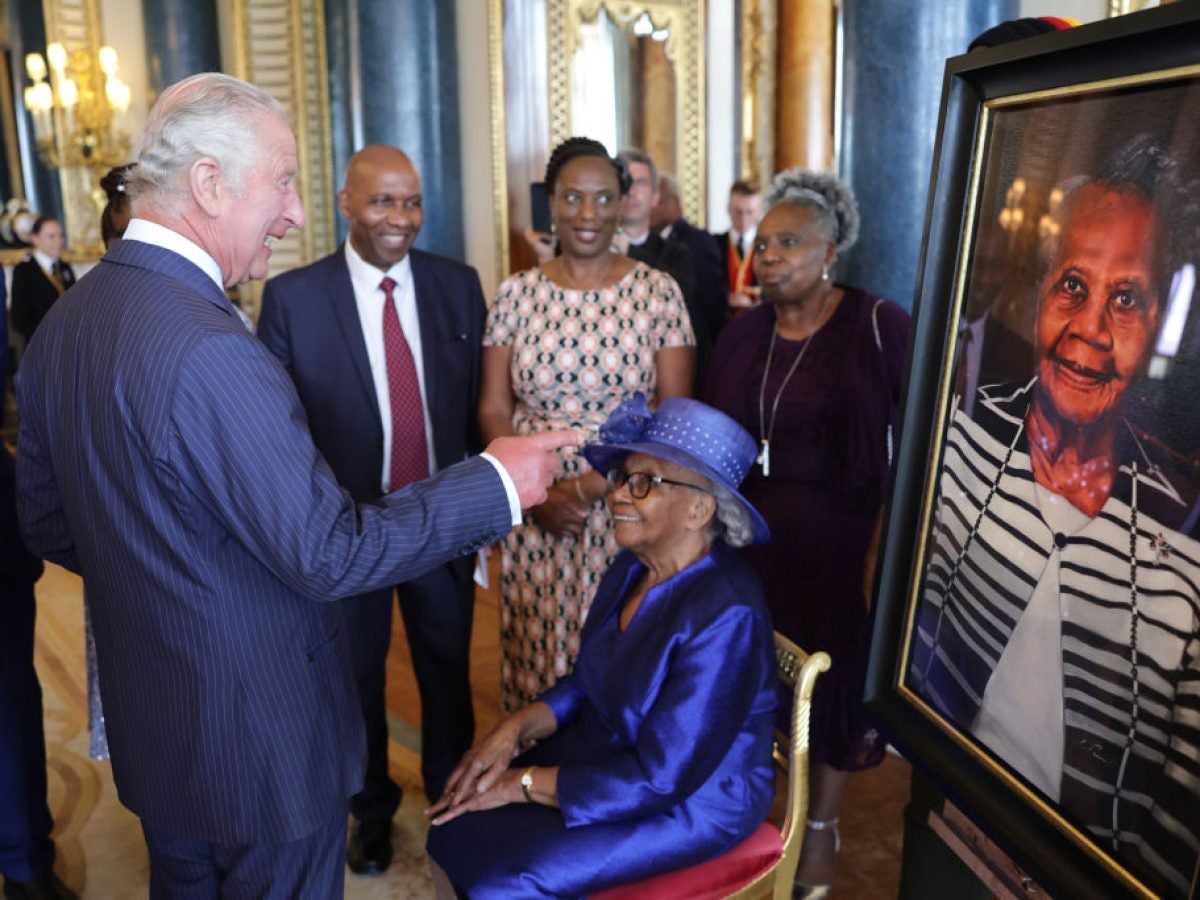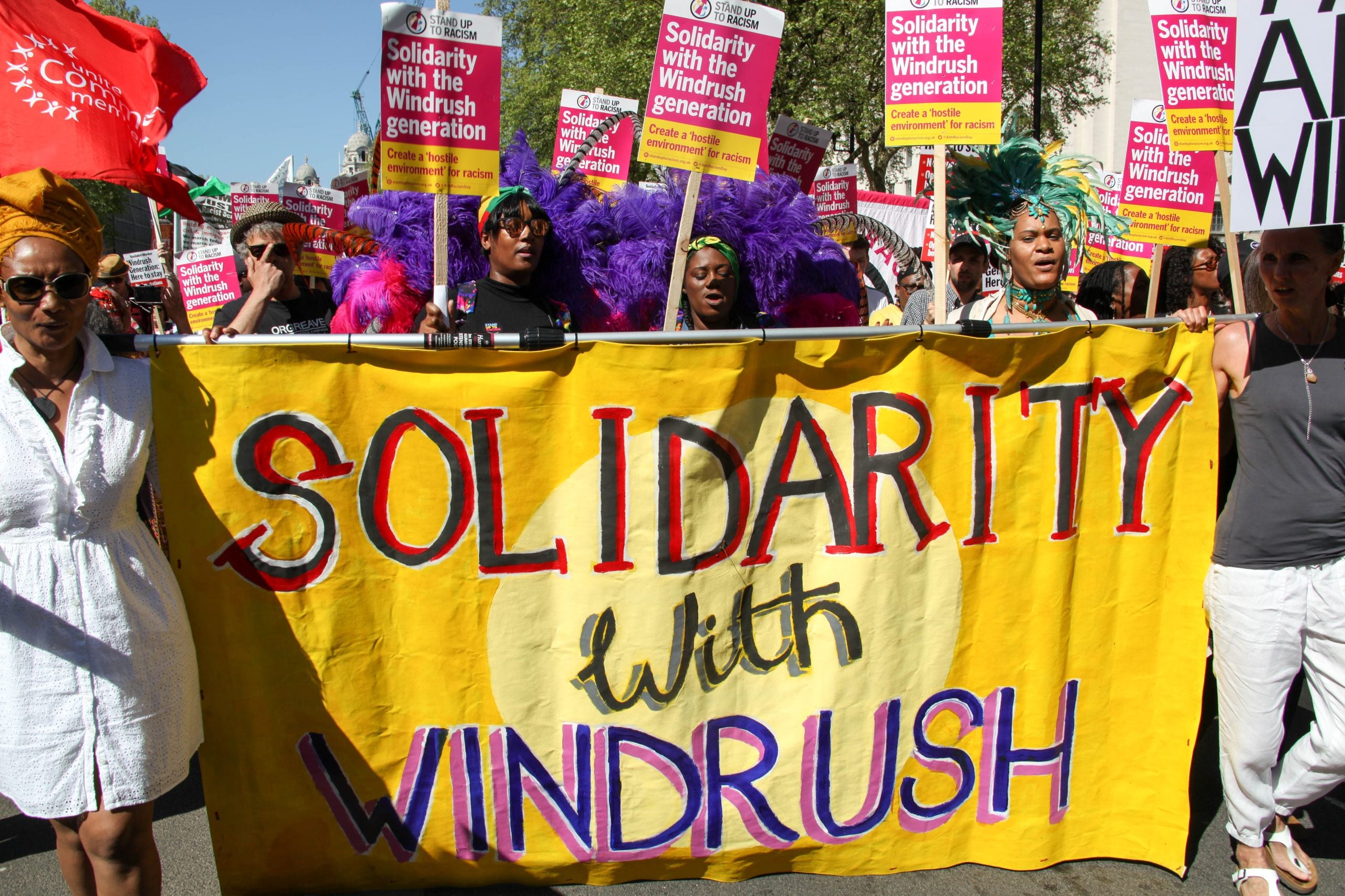
Seventy-five years ago, a ship carrying over 1,000 passengers from the Caribbean docked at Tilbury Dock near London. These passengers were among the first to arrive in the United Kingdom after being asked by the British government to help rebuild the country following World War II.
The arrival of the Empire Windrush ship on June 22, 1948 became a symbol of postwar migration that altered the United Kingdom and its culture. The phrase “Windrush Generation” has come to refer to the hundreds of thousands of immigrants who landed in the United Kingdom between the late 1940s and the early 1970s, particularly those from former British colonies in the Caribbean.

On Thursday, Windrush Day was marked with many community and official events, including a reception hosted by King Charles III. Charles commissioned portraits of 10 Windrush passengers for the royal collection as a reflection of “the immeasurable difference that they, their children and their grandchildren have made to this country.”
But there’s a complex story behind this momentous occasion.
Who Are The Windrush Generation?
The Empire Windrush carried people from Jamaica, Trinidad and other Caribbean islands. Many had fought against the Nazis in World War II. They came to work as nurses, railway workers and in other key jobs at the request of the British government.
Why Did They Come To Britain?
To help with the post-War labor crisis and repair the UK’s devastated economy, people from all across the former British Empire were invited to immigrate to the country. Many of those who arrived went on to work as nurses, drivers, cleaners, and manual laborers for the newly formed National Health Services (NHS).
What Are The Contributions Of The Windrush Generation?
The Windrush Generation helped build and sustain health services, transportation systems, schools and many other essential services. These Afro Caribbean people were trailblazers who broke barriers for Black people in the country. Many settled in working-class neighborhoods, including the Brixton and Notting Hill areas of London.
The new arrivals were welcomed by some but faced widespread discrimination and racism as well as lack of acknowledgement of their skills. In 1958, racially motivated attacks on Black residents in Notting Hill sparked days of rioting. The Notting Hill Carnival — now one of Europe’s biggest street parties — was founded soon after to celebrate Caribbean culture and to bring communities together.
What Is The Windrush Scandal?
The 1971 Immigration Act granted Commonwealth residents the right to live and work in the UK indefinitely. This included persons from the Windrush Generation as well as other former British colonies in South Asia and Africa.
However, it was revealed in April 2018 that the UK Home Office had retained no records of those granted permission to stay and had not issued the necessary documents to confirm their status, according to BBC News. It also destroyed the landing cards of the Windrush generation in 2010. Those affected were unable to prove their legal status in the country and were denied access to healthcare, work and housing. A review of historical cases also found that at least 83 people who had arrived before 1973 had been wrongly deported.
After decades of contributing so significantly to the economic, social and cultural landscape of the UK, hundreds of the Windrush Generation were threatened with deportation. The Windrush Scandal as it became known is still ongoing with many cases still pending.
What Is Windrush Day?
The first Windrush Day was observed on June 22, 2018. Since then, more people have begun taking part in Windrush Day festivities and commemorations to honor the Windrush Generation and the struggles that Black Britons in earlier generations have faced and still face today.